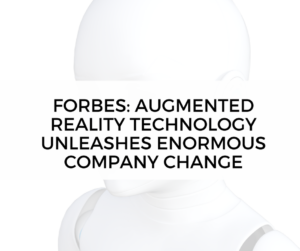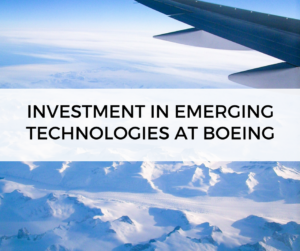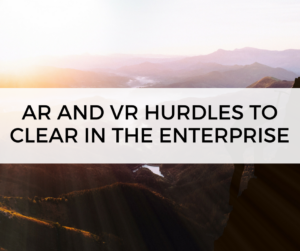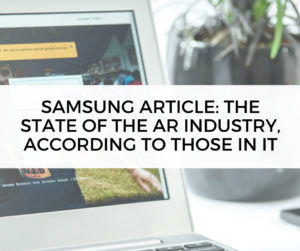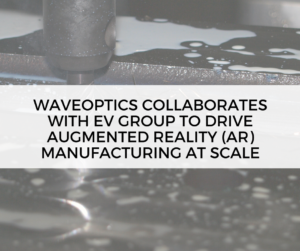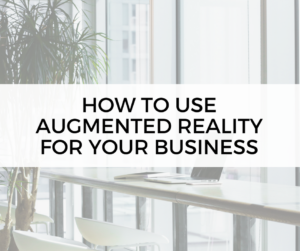Early adoption in the enterprise
Samsung NEXT Ventures director Ajay Singh believes there’s “good energy” in the AR ecosystem, with lots of traction among developers — many of whom are playing around with the latest dev kits and are excited by the potential of the technology. But he notes that energy and early developer traction has yet to translate into much of a market for AR applications, particularly in the consumer market.
Where early adoption is taking hold is in the enterprise, as large businesses are testing out ways they can drive efficiencies by providing workers with real-time information. The return of Google Glass in a special Enterprise Edition, along with the rise of smart glasses and wearable AR more generally, has been a boon for AR adoption as a business tool.
For applications such as manufacturing, warehousing, and field service in particular, wearable-based AR solutions can translate into double digit percentage productivity gains, according to Upskill chief strategy officer Jay Kim.
Upskill’s Skylight AR technology offers tools for providing contextually relevant real-time data and supplemental information in the wearer’s field of view, while users continue their work in a factory, warehouse, out in the field, or wherever they might be.
Kim, who sits on the board for the Augmented Reality for Enterprise Alliance (AREA), adds that companies like Boeing and General Electric — both clients of Upskill — pour enormous resources into chasing operational efficiency improvements of just a few percentage points, but at scale those improvements can result in game-changing numbers for them.
Talespin CEO Kyle Jackson says his immersive technology company has also been getting AR development work related to efficiency improvements. For example, one telecom company contracted with them to build an AR tool to support and reinforce technical knowledge in field workers.
The case against consumer AR
While some businesses are finding interesting use cases for the technology, the consumer side of the equation is a different story.
Singh, for instance, thinks too many developers are conducting their experiments in the entertainment space. He argues this is ill-advised because there’s not yet a way to effectively monetize consumer AR apps that haven’t reached massive popularity.
“There is no monetization unless there is an advertising model that comes in, because no consumer at the end of the day wants to pay for anything,” he said. But for advertising to work, you need millions or tens of millions of users, which is a tall order for AR developers in these early stages.
That said, some use cases are finding a bit of traction outside of the enterprise. Pokémon Go is the most obvious example, although it’s essentially a location-based game with some light AR elements.
Exercise game Zombies, Run! offers a more concrete use of AR, albeit solely in audio form, to motivate its many users to keep running. Meanwhile, Ikea has found success with an AR app that helps users visualize how furniture will look in their homes. And Google Translate has a real-time visual translation tool that can be a great help in translating between languages with different character sets — like Chinese to English, for instance.
Samsung NEXT business development and product strategy manager Jacob Loewenstein thinks the first big emerging success in consumer AR is personal cosmetic augmentation, such as Instagram or Snapchat filters. Users are adopting these filters to make themselves look different, share a laugh with friends, or visualize how new makeup and hair stylings affect their appearance.
Still, there are some barriers to consumer adoption. Unlike VR, mobile AR requires no additional hardware for use, but there’s an inherent friction keeping some from trying the latest mobile AR applications — namely, that they must open an app in AR mode, raise their hand, and keep holding the phone in front of them while using the software.
“It looks a little goofy,” says Singh, and it takes extra effort to do, “so unless there’s real usability it won’t really stick.”
And if the end-user doesn’t feel that they’re getting a worthwhile return on investment — whether that’s effort, time, or money — then the developer won’t get a return on their investment either.
Design limitations in AR
Everyone consulted for this article agreed that the bulk of AR software development is still in the experimental stage. Most developers are exploring the possibilities of this new medium rather than making polished products.
“There are no guidelines out there,” says John Buzzell, president of immersive experience lab You Are Here. “There are no accepted practices yet.”
All these bespoke, experimental designs add yet another hurdle for AR users to overcome. And they also make it harder for both developers and the businesses that hire them to scope out projects.
To date, most AR applications have required the use of markers to act as reference points and hooks for virtual objects and visualizations, although that’s beginning to change. Now multiple AR platforms have built-in capabilities to display virtual objects on horizontal, vertical, and sometimes uneven planes without meeting any markers.
Loewenstein believes that change could be huge for the AR ecosystem, because it opens new doors for developers to try new things. It also reduces friction for users who might otherwise get frustrated by the limitations of static marker-based AR.
AR today is largely used for visualization in various forms, including data and analytics, furniture placement, cosmetics, toys, building models, training materials, and so on. These use cases are valuable, especially in the enterprise, but they barely scratch the surface of the technology’s potential. Currently there’s no support for persistence or shared experiences, as objects are stored locally on the user’s device.
Loewenstein sees persistence as a challenge many in the industry are working on. “The core AR SDKs don’t necessarily enable people to experience the same thing,” he explains. “They both produce these point clouds and the devices don’t know because they’re looking from different angles — the point clouds have produced actually the same thing from different angles.”
Nor do they have a common point of reference, he continues. “It’s not like when I see the room and I put the ball on the chair, that’s basically largely being stored locally. So it’s my room in my chair, not our room.”
Limited budgets limit possibilities
There are certain limitations inherent in the platforms currently in use by AR developers, but they are also being stymied by early adopters not thinking big enough or being afraid of investing too much in this developing sector.
Buzzell says some of the complexities and uncertainties around AR have led to cautious, unimaginative project briefs from many of his enterprise clients.
“I think a lot of people are making these investments based on curiosity or kind of fear of being left behind,” he suggests. “We’re starting to see signs of improvement, but for businesses I think they have trouble figuring out how much it costs, how much to pay, whose budget does it come out of?”
Usually the answer comes from marketing departments, as they have the money and the pressure to try new things that could attract and engage customers. But the budgets themselves tend to only be five or six figures, according to Buzzell.
That puts pressure on AR developers to work magic with small teams and short development cycles, which limiting their possibilities. Projects are further held back by a lack of imagination or knowledge from enterprise clients regarding what AR can do or what it might be useful for.
Everyone we spoke with stressed that the pace of AR’s growth will be dictated not just by the level of investment from big tech companies driving new hardware and dev toolkits, but from businesses hiring AR developers to build actual, real-world applications based on the technology.
A market in transition
The AR sector today is seen by insiders as being in transition, both due to the myriad problems still yet to be solved and new technologies on the horizon.
In that way, the market is similar to what mainframes, mini-computers, and DIY kit computers were in the 1960s and 70s: a revolution in the making that could change how we interact with the world.
Jackson thinks we’re a year or two from having headsets on the market that offer the fidelity necessary to begin transforming how people work, think, and entertain, while others put large-scale transformation further out.
Developers are excited about mixed-reality headsets like the Microsoft HoloLens, which can offer immersion and shared experiences without making people feel isolated or inhibited in crowded public spaces like trade shows and retail centers.
Meanwhile, new use cases continue to emerge. Kim gives the example of a stripped-back form of smart glasses that conform to the style and profile of regular corrective lenses and frames, at the expense of things like display acuity.
He believes these could find adoption in services and retail industries, as well as other public-facing jobs where representatives might benefit from the extra information they could have available while talking to customers.
Whatever comes next, much of the attention of insiders and outsiders alike will be on advancing the technology and searching for a killer app that makes AR take off in a big way. For Buzzell, that killer app might not be just one thing.
“When the smartphone came out Steve Jobs famously said it’s an internet communications device, it’s a personal messaging device, it’s a phone, it’s a camera,” he explains. By the same token, perhaps, AR’s killer app could ultimately be its versatility and utility as a veritable Swiss army knife of productivity, learning, and entertainment.
The original article from Samsung NEXT can be seen here.
Read the member profile of our member Upskill quoted in the article.


